 W
WThe 1860 Democratic National Conventions were a series of presidential nominating conventions held to nominate the Democratic Party's candidates for president and vice president in the 1860 election. The first convention, held from April 23 to May 3 in Charleston, South Carolina, failed to nominate a ticket, while two subsequent conventions, both held in Baltimore, Maryland in June, nominated two separate presidential tickets.
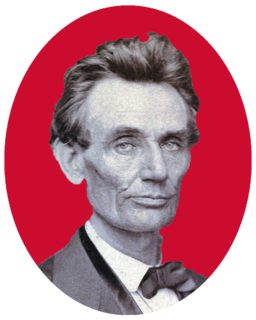 W
WThe 1860 Republican National Convention was a presidential nominating convention that met from May 16 to May 18 in Chicago, Illinois. It was held to nominate the Republican Party's candidates for president and vice president in the 1860 election. The convention selected former Representative Abraham Lincoln of Illinois for president and Senator Hannibal Hamlin of Maine for vice president.
 W
WThe 1860 United States presidential election was the 19th quadrennial presidential election, held on November 6, 1860. In a four-way contest, the Republican Party ticket of Abraham Lincoln and Hannibal Hamlin, absent from the ballot in ten slave states, won a national popular plurality, a popular majority in the North where states already had abolished slavery, and a national electoral majority comprising only Northern electoral votes. Lincoln's election thus served as the main catalyst of the American Civil War.
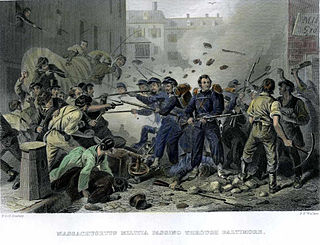 W
WThe Baltimore riot of 1861 was a civil conflict on Friday, April 19, 1861, on Pratt Street, in Baltimore, Maryland. It occurred between antiwar "Copperhead" Democrats and other Southern/Confederate sympathizers on one side, and on the other, members of Massachusetts and Pennsylvania state militia regiments en route to the national capital at Washington who had been called up for federal service. The fighting began at the President Street Station, spreading throughout President Street and subsequently to Howard Street, where it ended at the Camden Street Station. The riot produced the first deaths by hostile action in the American Civil War and is nicknamed the "First Bloodshed of the Civil War".
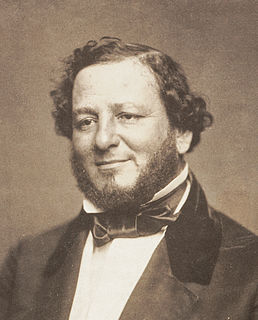 W
WJudah Philip Benjamin, QC was a lawyer and politician who was a United States Senator from Louisiana, a Cabinet officer of the Confederate States and, after his escape to the United Kingdom at the end of the American Civil War, an English barrister. Benjamin was the first Jew to hold a Cabinet position in North America and the first to be elected to the United States Senate who had not renounced his faith.
 W
WThe Camp Jackson affair, also known as the Camp Jackson massacre, occurred during the American Civil War on May 10, 1861, when a volunteer Union Army regiment captured a unit of secessionists at Camp Jackson, outside the city of St. Louis, in the divided slave state of Missouri.
 W
WThe Cornerstone Speech, also known as the Cornerstone Address, was an oration given by Alexander H. Stephens, Vice President of the Confederate States of America, at the Athenaeum in Savannah, Georgia, on March 21, 1861. The speech, delivered extemporaneously a few weeks before the Civil War began with the Confederate attack on Fort Sumter, defended slavery as a fundamental and just result of the supposed inferiority of the black race, explained the fundamental differences between the constitutions of the Confederate States and that of the United States, enumerated contrasts between Union and Confederate ideologies, and laid out the Confederacy's rationale for seceding from the U.S.
 W
WThe Corwin Amendment is a proposed amendment to the United States Constitution that would shield "domestic institutions" of the states from the federal constitutional amendment process and from abolition or interference by Congress. Although the Corwin Amendment does not explicitly use the word slavery, it was designed specifically to protect slavery from federal power. Congress proposed the Corwin Amendment on March 2, 1861, shortly before the outbreak of the American Civil War. It has not been ratified by the requisite number of states.
 W
WThe East Tennessee bridge burnings were a series of guerrilla operations carried out during the American Civil War by Union sympathizers in Confederate-held East Tennessee in 1861. The operations, planned by Carter County minister William B. Carter (1820–1902) and authorized by President Abraham Lincoln, called for the destruction of nine strategic railroad bridges, followed by an invasion of the area by Union Army forces then in southeastern Kentucky. The conspirators managed to destroy five of the nine targeted bridges, but the Union Army failed to move, and would not invade East Tennessee until 1863, nearly two years after the incident.
 W
WThe East Tennessee Convention was an assembly of Southern Unionist delegates primarily from East Tennessee that met on three occasions during the Civil War. The Convention most notably declared the secessionist actions taken by the Tennessee state government on the eve of the war unconstitutional, and requested that East Tennessee, where Union support remained strong, be allowed to form a separate state that would remain part of the United States split from the rest of Confederate Tennessee. The state legislature denied this request, and the Confederate Army occupied the region in late 1861.
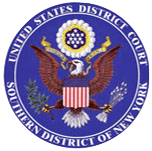 W
WEx parte McQuillon, 16 F. Cas. 347 (1861), was a case decided in August 1861 by the United States District Court for the Southern District of New York involving a writ of habeas corpus. Judge Samuel Betts issued the writ for Purcell McQuillon, who was being held in military custody at Fort Lafayette, but the commandant of the fort declined to bring McQuillon before the court as demanded, citing an order from Gen. Winfield Scott. Over the objection of McQuillon's attorney, Judge Betts took no further action on the case, declaring that it would be indecorous to openly disagree with Chief Justice Taney's reasoning in ex parte Merryman, but that the Constitution must be defended in whatever way it can be and the public would not want everyone to have access to habeas corpus during the Civil War.
 W
WEx parte Merryman, 17 F. Cas. 144 (No. 9487), is a well-known and controversial U.S. federal court case that arose out of the American Civil War. It was a test of the authority of the President to suspend "the privilege of the writ of habeas corpus" under the Constitution's Suspension Clause, when Congress was in recess and therefore unavailable to do so itself. More generally, the case raised questions about the ability of the executive branch to decline enforcement of judicial decisions when the executive believes them to be erroneous and harmful to its own legal powers.
 W
WGeorgia's Ordinance of Secession was adopted at the Georgia Secession Convention of 1861. It was put to the vote on January 19, 1861; concluding at 2:00 P.M.. Prior to signing the ordinance, Eugenius A. Nisbet tabled a motion suggesting that the ordinance should be signed by all of the convention's delegates, irrespective of their vote – as a pledge of support and to signal a unified purpose. Nisbet's motion passed, and at 12 o'clock M., Convention President, George W. Crawford, announced that the hour had arrived for signing the Ordinance of Secession.
 W
WThe area known as "Nickajack" generally refers to the rugged Appalachian foothills in eastern Tennessee and northeastern Alabama. "Nickajack" is a corruption of the Cherokee word ᎠᏂ ᎫᏌᏘ Ᏹ (Ani-Kusati-yi) which translates to Coosa Town, but more likely references Koasati Town.
 W
WAn Ordinance of Secession was the name given to multiple resolutions drafted and ratified in 1860 and 1861, at or near the beginning of the Civil War, by which each seceding Southern state or territory formally declared secession from the United States of America. South Carolina, Mississippi, Georgia, and Texas also issued separate documents purporting to justify secession.
 W
WThe Peace Conference of 1861 was a meeting of 131 leading American politicians in February 1861, at the Willard's Hotel in Washington, D.C., on the eve of the American Civil War. The purpose of the conference was to avoid, if possible, the secession of the eight slave states, from the upper and border South, that had not done so as of that date. The seven states that had already seceded did not attend.
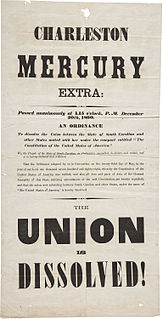 W
WThe Declaration of the Immediate Causes Which Induce and Justify the Secession of South Carolina from the Federal Union, also known as the South Carolina Declaration of Secession, was a proclamation issued on December 24, 1860, by the government of South Carolina to explain its reasons for seceding from the United States. It followed the brief Ordinance of Secession that had been issued on December 20. The declaration is a product of a convention organized by the state's government in the month following the election of Abraham Lincoln as U.S. President, where it was drafted in a committee headed by Christopher Memminger. The declaration stated the primary reasoning behind South Carolina's declaring of secession from the U.S., which was described as "increasing hostility on the part of the non-slaveholding States to the Institution of Slavery".
 W
WStar of the West was an American civilian steamship that was launched in 1852 and scuttled by Confederate forces in 1863. In January 1861, the ship was hired by the government of the United States to transport military supplies and reinforcements to the U.S. military garrison of Fort Sumter. A battery on Morris Island, South Carolina handled by cadets from the South Carolina Military Academy fired upon the ship, effectively the first shots fired in the American Civil War.
 W
WThe Battle of Fort Sumter was the bombardment of Fort Sumter near Charleston, South Carolina by the South Carolina militia, and the return gunfire and subsequent surrender by the United States Army, that started the American Civil War.
 W
WTexas secession movements refer to the secession of Texas during the American Civil War and the activities of modern organizations supporting such effort to secede from the United States and become an independent sovereign state since the 1990s.
 W
WTown Line is a hamlet and census-designated place (CDP) in Erie County, New York, United States. The population was 2,367 at the 2010 census. It is part of the Buffalo–Niagara Falls Metropolitan Statistical Area. The community is located on the boundary between the towns of Lancaster and Alden. Town Line is notable for having held a nonbinding vote to secede from the United States in 1861, and for having held a ceremonial vote to rejoin the United States in 1946.
 W
WTowson United Methodist Church is a large United Methodist Church in the historic Hampton subdivision of Towson, a suburb in Baltimore County, Maryland. Its past, rooted in 19th-century America and subsequent growth in the two centuries since then, has closely paralleled the nation's political and sociological trends. It was a congregation split asunder in 1861 on the eve of the American Civil War in a border state of divided loyalties, which eventually reunited and built a church in the post–World War II era of the 1950s, a time of reconciliation and rapid growth by mainline Protestant denominations, especially in the more affluent suburbs.
 W
WThe Virginia Secession Convention of 1861 was called in Richmond to determine whether Virginia would secede from the United States, to govern the state during a state of emergency, and to write a new Constitution for Virginia, which was subsequently voted down in referendum under the Confederate Government.
 W
WThe 1861 Wheeling Convention was an assembly of Virginia Southern Unionist delegates from the northwestern counties of Virginia, aimed at repealing the Ordinance of Secession, which had been approved by referendum, subject to a vote.